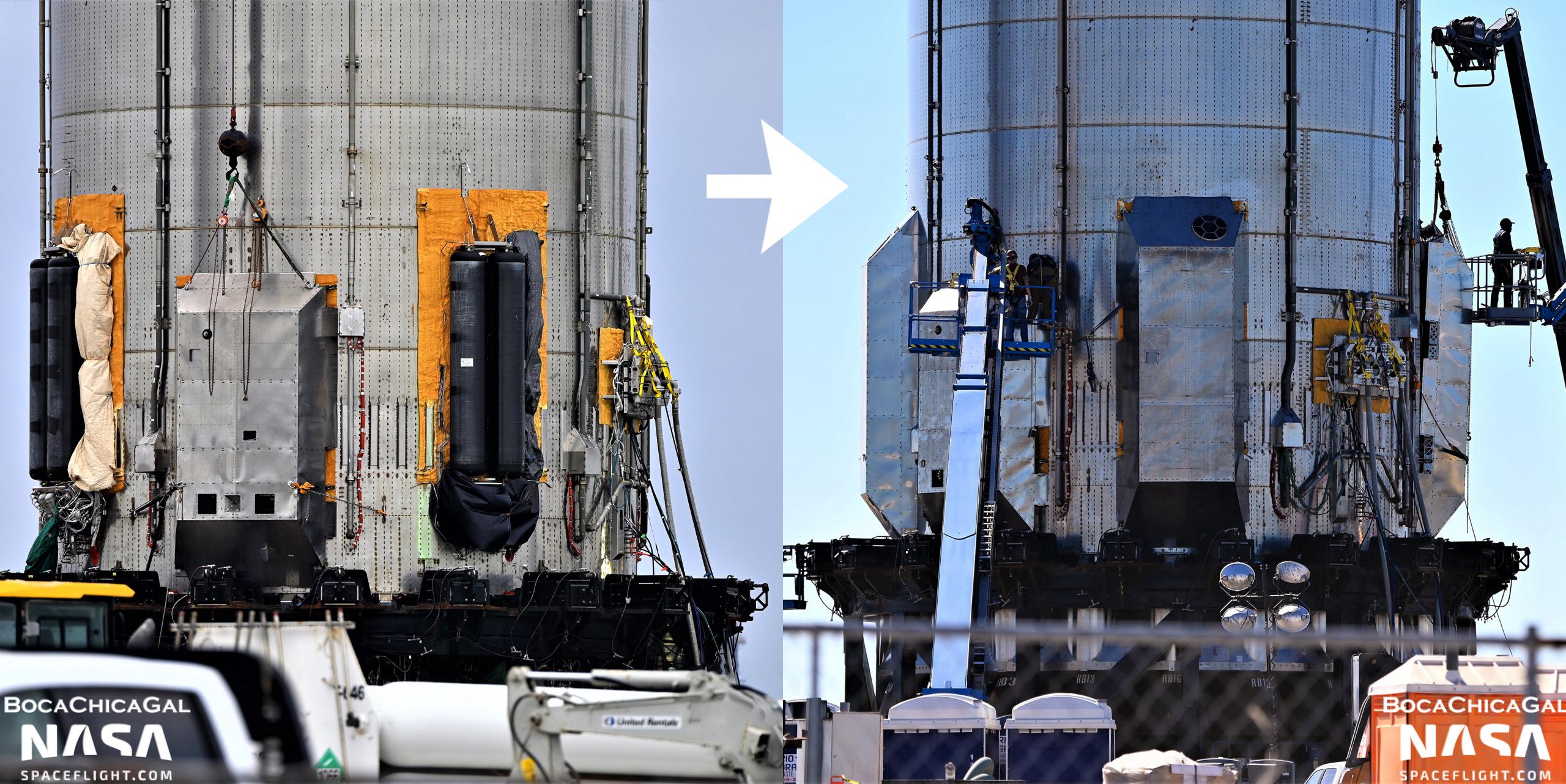
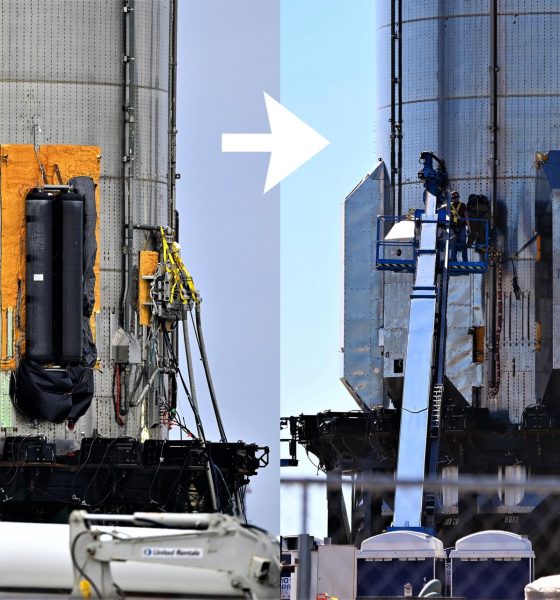
SpaceX
SpaceX fully installs Super Heavy booster’s ‘aerocovers’
For the first time, SpaceX has more or less installed a full set of ‘aerocovers’ on a Super Heavy booster prototype.
Designed to protect the booster from both itself and Earth’s atmosphere during ground testing, liftoff, ascent, and reentry, Super Heavy’s the structures amount to thin, steel shells mounted on metal box frames. The most obvious aerocovers slot over the top of six racks of equipment installed on the outside of Super Heavy’s aft end, giving the booster a sort of utility belt of hydraulic systems, pressure vessels, avionics, and heat exchangers. Unsurprisingly, those racks are festooned with electronics, composites, and thousands of feet of wiring and thin plumbing – none of which are particularly suited to sit a few dozen feet from the fury of 29-33 Raptor engines or near the leading edge of a hypersonic reentry vehicle.
Aside from the steel they’re mounted on, it’s likely that every system located on Super Heavy’s ‘utility built’ would begin malfunctioning or be destroyed outright if directly exposed to just a few seconds of the hypersonic buffeting and heating Starship boosters will experience during reentry. Unlike Falcon boosters, which almost always use reentry burns to slow down and create a sort of heat shield with their own exhaust, SpaceX is theoretically designing Super Heavy to survive the full force of reentry without an extra burn to cushion the blow.
To survive reentry and still land in good enough condition to enable anything close to same-day reusability, which is SpaceX’s goal, every ounce of at-risk equipment installed on Super Heavy’s exterior will likely need to be carefully shielded. In theory, that’s the purpose of the aerocovers SpaceX has only just begun to fully install – let alone test – on Super Heavy B4.
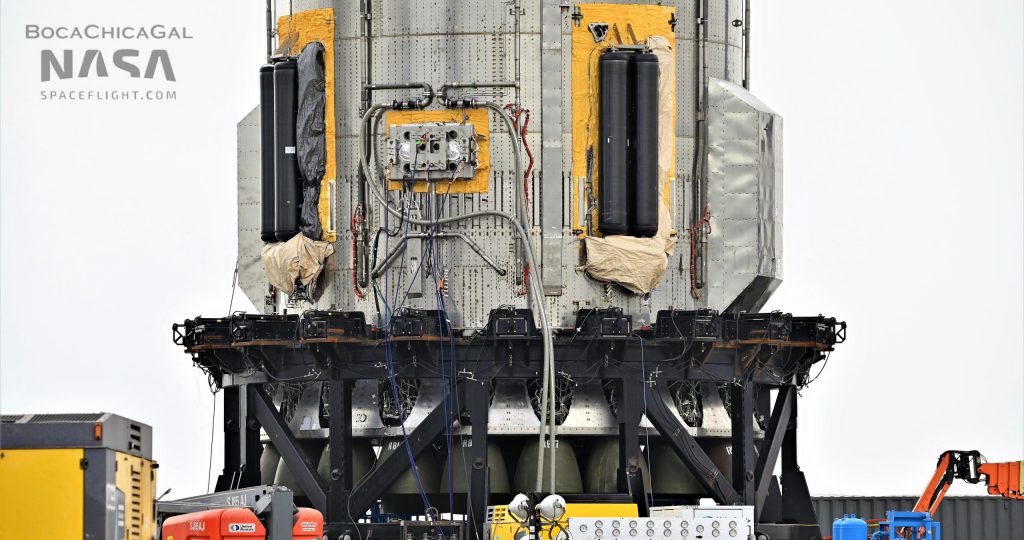
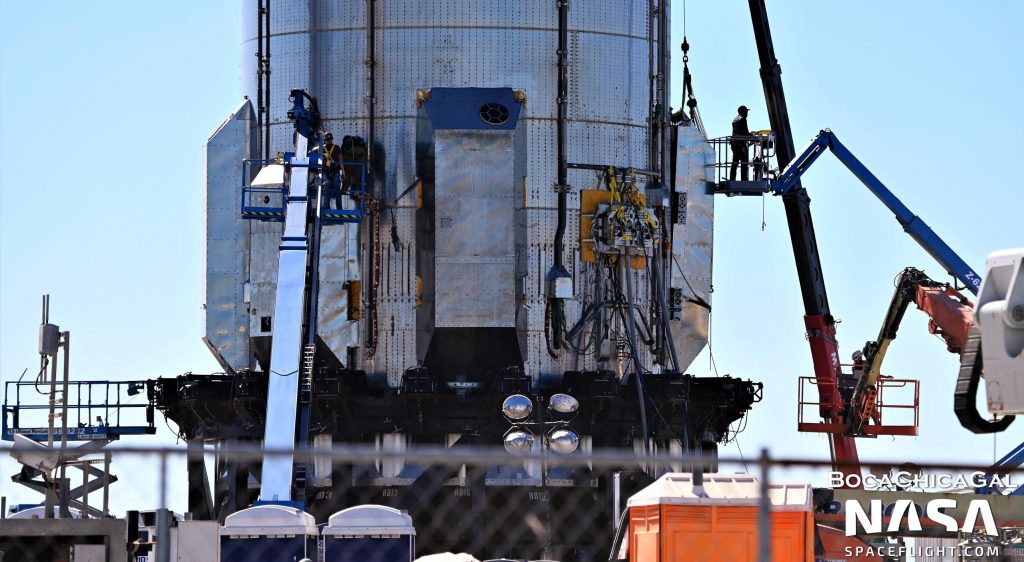
Before Booster 4’s most recent installation on the orbital launch mount, SpaceX did install covers over a pair of hydraulic and heat exchanger racks but left all four composite overwrapped pressure vessel (COPV) racks and an umbilical port uncovered. After B4 was removed from the launch mount for the third time on December 30th, both covers were uninstalled. On January 14th, 2022, though, SpaceX rapidly installed all six covers for the first time and began sealing each cover’s exposed corners. On January 17th, SpaceX even installed aerodynamic surfaces around Booster 4’s protruding umbilical port, smoothing out any hypothetical airflow around the device.
Prior to main aerocover installation, SpaceX also added at least half a dozen small boxes seemingly designed to protect a number of thin metal probes that pierce through Super Heavy’s tanks and skin and are connected to avionics boxes. Additionally, while less visible, teams also worked to finish Super Heavy B4’s Raptor heat shielding with a large number of similar sheet steel covers and panels. Without official photos from SpaceX or another lift onto the launch mount, it’s impossible to know if Booster 4’s Raptor heat shield is fully closed out, but the shielding that runs around its circumference appears to be finished.
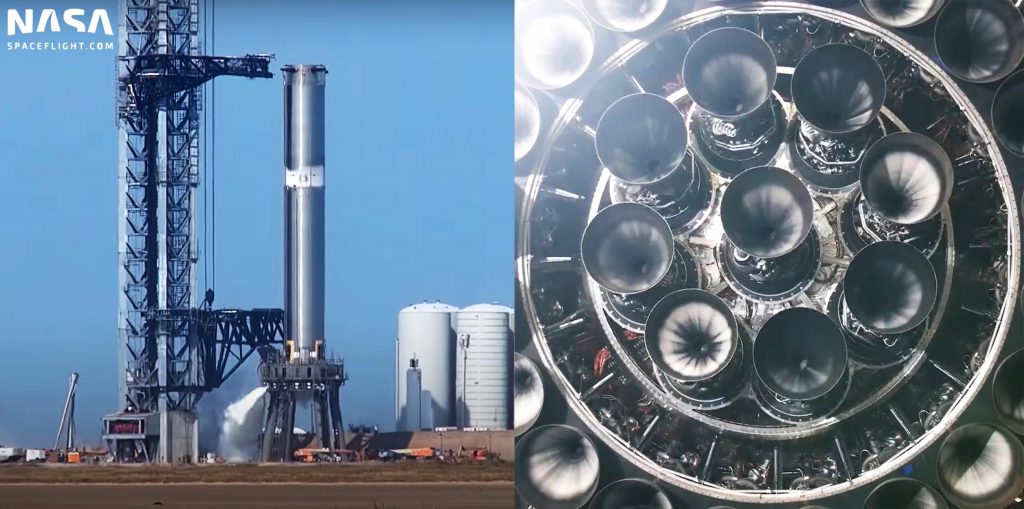
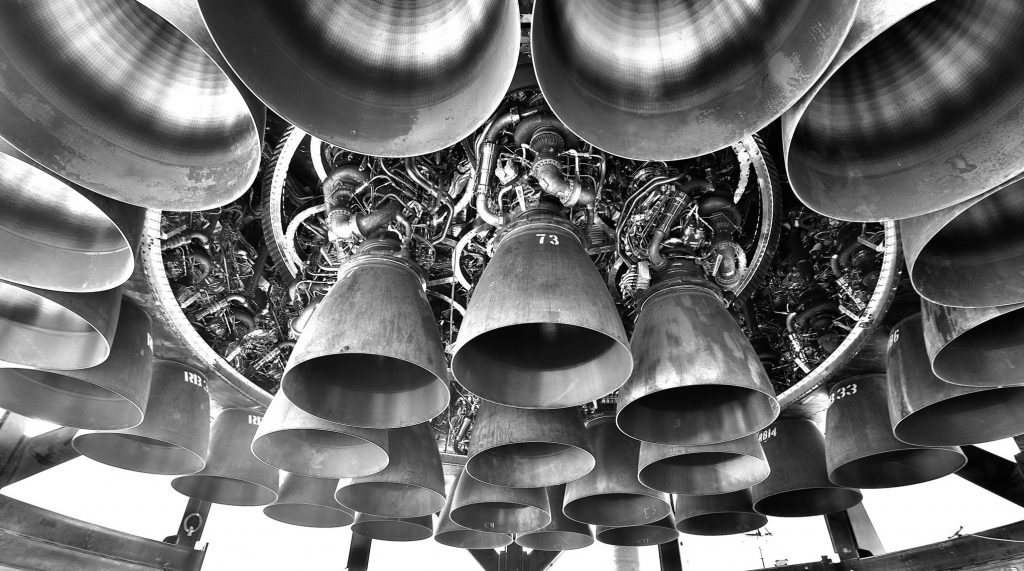
As it stands, Super Heavy B4 is likely just a few parts shy of true completion and is about as ready as it’ll ever be for static fire testing. More likely than not, those aerocovers and Raptor heat shields are essential for Super Heavy B4 to be able to perform more than one test at a time without immediately requiring major repairs. Unlike Starship, which has mostly tested three engines at once and only performed a few six-engine static fires, Super Heavy B4 may eventually test all 29 Raptor engines simultaneously.
When almost 30 engines are involved, even nominal preburner testing will likely produce a massive fireball that could engulf Super Heavy’s aft (if not the entire booster) with flames. For static fire testing, Raptors typically produce a smaller and briefer (but still substantial) fireball during shutdown, creating another potential source of damage to any sensitive hardware located anywhere on or in Booster 4’s thrust section. As such, Super Heavy aerocovers may be just as important for surviving static fires as they’ll be for surviving launches and landings.
It’s unclear if or when Super Heavy B4 will return to the orbital launch mount for wet dress rehearsal and static fire testing. SpaceX has ambiguous test windows scheduled from 10am to 10pm on January 18th, 19th, and 20th.

Elon Musk
Elon Musk’s Biggest Revelations on AI, Robots, and the Future of Work from the Moonshots Podcast

Elon Musk’s appearance on the Moonshots with Peter Diamandis podcast was packed with bold predictions, candid admissions, and surprising tech insights. The nearly three-hour conversation covered everything from artificial intelligence to humanoid robots, geopolitics, and the future of work. Here are the top 10 most intriguing takeaways:
-
Aggressive AGI Timeline Predictions
Musk offered a detailed view on when artificial general intelligence (AGI) could emerge, suggesting it may arrive sooner than many expect, emphasizing both transformative potential and risks.
-
U.S. vs. China in the AI Race
He discussed the strategic competition between the United States and China over AI development, noting that geopolitical dynamics will shape how and who leads in the next decades.
-
Future of Job Markets
Musk touched on how AI and automation could reshape employment, predicting massive boosts in productivity alongside potential disruptions in traditional work structures.
-
Clean Energy Transition
A recurring theme was the role of clean energy in future economies, with Musk reiterating the importance of scaling sustainable power generation and storage.
-
Humanoid Robots Are Coming
On the podcast, Musk elaborated on Tesla’s work on humanoid robots, hinting at timelines and applications that go beyond factories to general-purpose assistance.
-
Tesla Roadster “Last Human-Driven Car”
Outside the core discussion topics, Musk teased features of the upcoming Tesla Roadster — calling it “the best of the last of the human-driven cars” and suggesting safety won’t be its main selling point.
-
The Role of AI in Clean Energy and Robotics
Linking AI to both energy optimization and robotics, Musk explained how smarter systems could accelerate decarbonization and task automation across industries.
-
U.S. Innovation Leadership
Musk argued that maintaining American leadership in key tech sectors like AI, space, and robotics should be a national priority, with thoughtful policy and investment.
-
Job Creation vs. Job Elimination
While acknowledging automation’s disruptive effects, he also outlined scenarios where new industries and opportunities could emerge, particularly in AI, space, and advanced manufacturing.
-
Long-Term Vision for Humanity
Throughout the conversation, Musk revisited his long-term philosophical views — including a belief in humanity’s responsibility to become a multi-planetary and technologically empowered species.
Whether you agree with Musk’s optimism or not, the podcast offers a window into the thinking of one of the most influential figures in tech today, in and why his visions continue to spark debate and inspiration.
Elon Musk
Starlink achieves major milestones in 2025 progress report
Starlink wrapped up 2025 with impressive growth, adding more than 4.6 million new active customers and expanding service to 35 additional countries, territories, and markets.

Starlink wrapped up 2025 with impressive growth, adding more than 4.6 million new active customers and expanding service to 35 additional countries, territories, and markets. The company also completed deployment of its first-generation Direct to Cell constellation, launching over 650 satellites in just 18 months to enable cellular connectivity.
SpaceX highlighted Starlink’s impressive 2025 progress in an extensive report.
Key achievements from Starlink’s 2025 Progress
Starlink connected over 4.6 million new customers with high-speed internet while bringing service to 35 more regions worldwide in 2025. Starlink is now connecting 9.2 million people worldwide. The service achieved this just weeks after hitting its 8 million customer milestone.
Starlink is now available in 155 markets, including areas that are unreachable by traditional ISPs. As per SpaceX, Starlink has also provided over 21 million airline passengers and 20 million cruise passengers with reliable high-speed internet connectivity during their travels.
Starlink Direct to Cell
Starlink’s Direct to Cell constellation, more than 650 satellites strong, has already connected over 12 million people at least once, marking a breakthrough in global mobile coverage.
Starlink Direct to Cell is currently rolled out to 22 countries and 6 continents, with over 6 million monthly customers. Starlink Direct to Cell also has 27 MNO partners to date.
“This year, SpaceX completed deployment of the first generation of the Starlink Direct to Cell constellation, with more than 650 satellites launched to low-Earth orbit in just 18 months. Starlink Direct to Cell has connected more than 12 million people, and counting, at least once, providing life-saving connectivity when people need it most,” SpaceX wrote.
Elon Musk
Starlink passes 9 million active customers just weeks after hitting 8 million
The milestone highlights the accelerating growth of Starlink, which has now been adding over 20,000 new users per day.

SpaceX’s Starlink satellite internet service has continued its rapid global expansion, surpassing 9 million active customers just weeks after crossing the 8 million mark.
The milestone highlights the accelerating growth of Starlink, which has now been adding over 20,000 new users per day.
9 million customers
In a post on X, SpaceX stated that Starlink now serves over 9 million active users across 155 countries, territories, and markets. The company reached 8 million customers in early November, meaning it added roughly 1 million subscribers in under seven weeks, or about 21,275 new users on average per day.
“Starlink is connecting more than 9M active customers with high-speed internet across 155 countries, territories, and many other markets,” Starlink wrote in a post on its official X account. SpaceX President Gwynne Shotwell also celebrated the milestone on X. “A huge thank you to all of our customers and congrats to the Starlink team for such an incredible product,” she wrote.
That growth rate reflects both rising demand for broadband in underserved regions and Starlink’s expanding satellite constellation, which now includes more than 9,000 low-Earth-orbit satellites designed to deliver high-speed, low-latency internet worldwide.
Starlink’s momentum
Starlink’s momentum has been building up. SpaceX reported 4.6 million Starlink customers in December 2024, followed by 7 million by August 2025, and 8 million customers in November. Independent data also suggests Starlink usage is rising sharply, with Cloudflare reporting that global web traffic from Starlink users more than doubled in 2025, as noted in an Insider report.
Starlink’s momentum is increasingly tied to SpaceX’s broader financial outlook. Elon Musk has said the satellite network is “by far” the company’s largest revenue driver, and reports suggest SpaceX may be positioning itself for an initial public offering as soon as next year, with valuations estimated as high as $1.5 trillion. Musk has also suggested in the past that Starlink could have its own IPO in the future.








